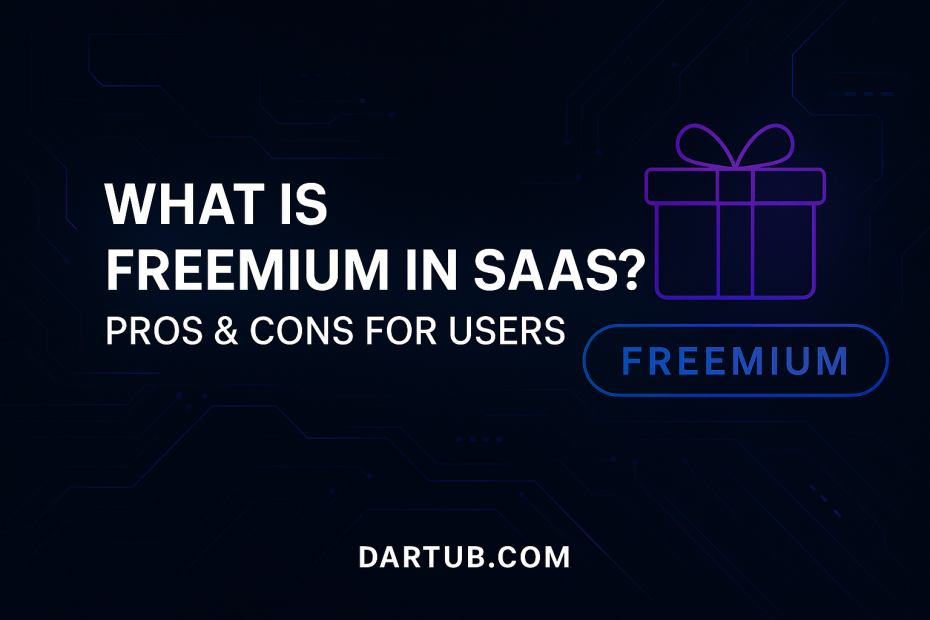In the world of SaaS (Software as a Service), the freemium model is one of the most powerful — and popular — business strategies. You’ve likely encountered it: software platforms that offer core features for free, while advanced capabilities require payment. But what exactly does “freemium” mean in SaaS, and what are its true advantages and downsides for users?
This 2025 guide explores the freemium model in SaaS, who it benefits, and how to navigate it wisely as a user.
What is Freemium in SaaS?
Freemium is a hybrid of the words “free” and “premium.” In the SaaS world, it refers to:
A pricing strategy where users can access a basic version of a software product for free, with the option to upgrade to paid plans for more features, storage, or support.
Common freemium SaaS platforms include:
- Canva
- Grammarly
- Dropbox
- Zoom
- HubSpot CRM
- Trello
The goal is to attract users with a free version, build trust and reliance, and eventually convert them into paying customers.
How Freemium Works in Practice
Here’s how most SaaS companies structure freemium models:
- Free Tier: Limited features, users, or usage caps
- Premium Tier: Full feature set, integrations, analytics, priority support
- Monetization Strategy: Rely on a small % of users upgrading to fund the free users
Example: Canva’s free plan offers basic design tools, while Canva Pro includes premium templates, background remover, brand kit, and more.
Advantages of Freemium for Users
1. Risk-Free Testing
Try a product before spending a cent. You can test functionality, UI/UX, and usefulness without obligation.
2. No Credit Card Required
Most freemium tools don’t require payment info — making signup fast and pressure-free.
3. Long-Term Free Use
Many freemium products are generous enough to serve small teams or personal projects indefinitely.
4. Scalability
As your needs grow, upgrading is easy and seamless.
5. Community & Support Access
Even on free plans, users often get access to help docs, forums, and sometimes live chat support.
Disadvantages of Freemium for Users
1. Feature Limitations
Free tiers may lack advanced tools, integrations, or automation features.
2. Usage Caps
Limits on storage, monthly actions, team members, or file uploads can restrict real productivity.
3. Hidden Upgrade Pressure
Some platforms make the free experience intentionally frustrating to nudge you toward paying.
4. Data Lock-In
Exporting your data can be tricky once you’re deep into a free platform.
5. Ads or Branding
Free tiers often include watermarks, ads, or branded messages that can reduce professionalism.
Best Practices for Users Choosing Freemium SaaS
- Evaluate your needs: Will the free plan cover your short-term goals?
- Read the fine print: Understand limitations, especially around data export and security.
- Check upgrade pricing: Make sure premium tiers are affordable before you commit to the ecosystem.
- Start with trial + freemium combo: Some platforms offer both, allowing full access before reverting to free.
When to Upgrade to Premium
- You outgrow storage or functionality
- Your business or team expands
- You need automation, integrations, or reporting
- You require support or compliance features (e.g., SSO, audit logs)
🔁 Pro Tip: Some platforms offer discounts or lifetime deals via sites like AppSumo.
Final Verdict: Is Freemium a Good Deal for Users?
Yes — if you choose wisely. Freemium SaaS models are a great way to access tools, test features, and build workflows without financial commitment. But it’s crucial to be aware of limitations and recognize when it’s time to invest in premium.
Used strategically, freemium can empower individuals, startups, and small teams to operate efficiently without breaking the bank.
